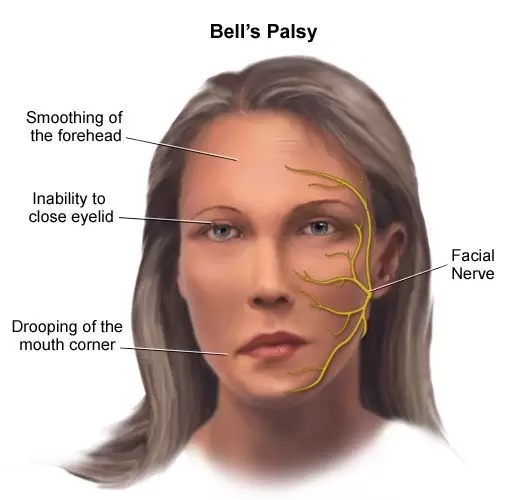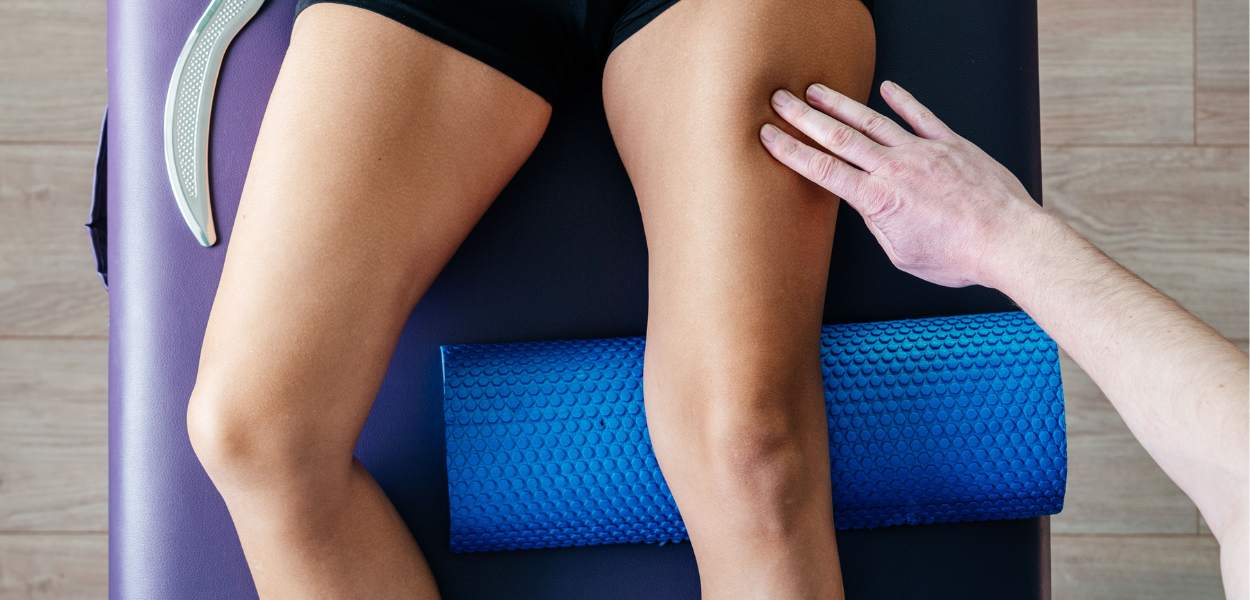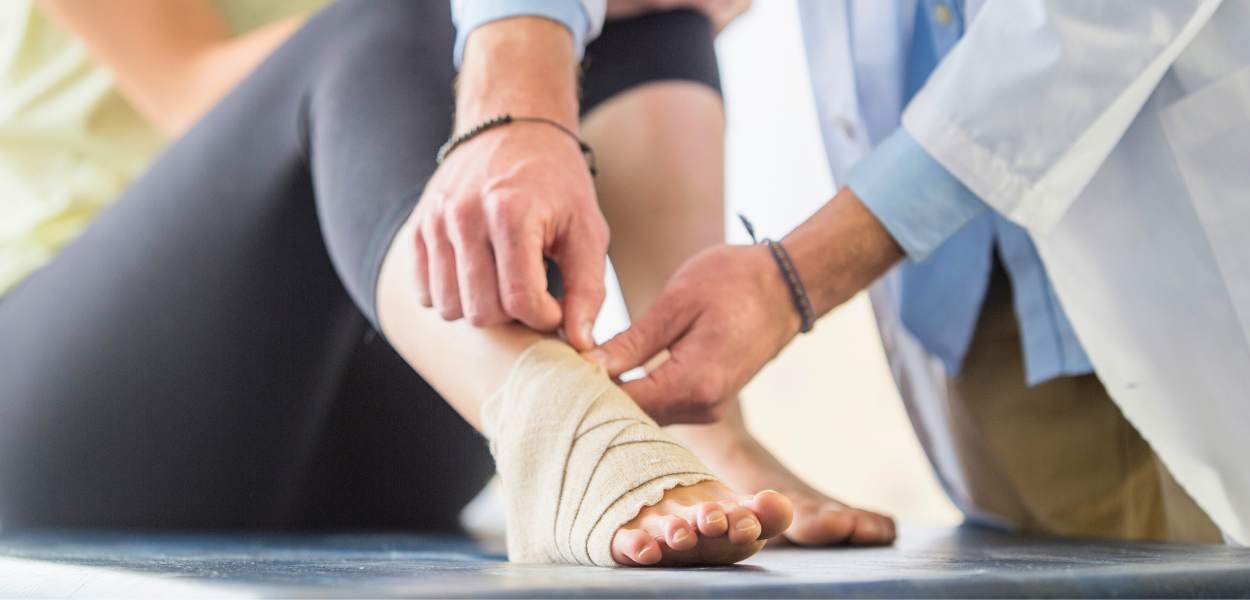Shin Splints (Medial Tibial Stress Syndrome)
Shin splints, also known as medial tibial stress syndrome, is a condition that affects the lower leg in the shin region. It is often caused by overuse or repetitive stress on the shinbone (tibia) and the surrounding muscles and tendons. It typically occurs in runners and athletes that engage in intensive weight-bearing sports, such as high and long jumpers.
Shin splints can be painful and can interfere with daily activities like walking or running.
Symptoms of Shin Splints
The most common symptom of shin splints is pain along the inner edge of the shinbone. This pain may be dull at first but can become more severe with continued activity.
Other symptoms may include:
Swelling in the lower leg
Tenderness and soreness along the shinbone
Numbness or weakness in the feet
Pain that worsens during and after exercise
Pain that persists even when at rest
Causes
Shin splints are often caused by repetitive stress on the shinbone and surrounding muscles and tendons. This stress can be caused by a variety of factors, including:
Overuse: Engaging in high-impact activities such as running, jumping, or dancing for extended periods of time can put a lot of stress on the lower leg, leading to shin splints
Improper footwear: Wearing shoes that do not provide proper support or cushioning can also contribute to shin splints
Muscle imbalances: Weakness or tightness in certain muscles, such as the calf muscles, can cause the muscles and tendons surrounding the shinbone to work harder, leading to shin splints
Flat feet or high arches: Having flat feet or high arches can cause an abnormal distribution of weight on the lower leg, leading to shin splints
Sudden increase in activity: Starting a new exercise routine or increasing the intensity of an existing routine too quickly can also cause shin splints.
How Can Physiotherapy Help Shin Splints?
Physiotherapy can be an effective treatment for shin splints. Our physiotherapists can assess the underlying causes of the condition and develop a treatment plan that addresses the individual's needs.
Physiotherapy can help with shin splints in several ways:
Providing pain relief: we use various techniques to help reduce pain and inflammation, such as massage, ice therapy, and ultrasound
Improving flexibility and strength: we prescribe stretching and strengthening exercises to address muscle imbalances and improve flexibility and strength in the lower leg
Addressing biomechanical issues: we can assess an individual's gait and foot posture and prescribe corrective exercises or custom orthotics to address any biomechanical issues that may be contributing to shin splints
Preventing future injury: Physiotherapists can provide advice on how to prevent shin splints from recurring, such as proper footwear, warm-up and cool-down routines, and gradual progression of activity levels.
Assessment and Diagnosis
In conjunction with medical history taking, our physiotherapists will perform a series of diagnostic tests to determine the severity of your condition and the factors contributing to it. These tests will also help determine the best course of treatment.
Physiotherapy Treatment for Shin Splinys
Once our physiotherapists have assessed the situation, they will customise a treatment plan to help you recover faster and return to full mobility.
We use a range of physiotherapy methods to treat medial tibial stress syndrome. Your treatment plan may include:
Stretching and strengthening exercises: our physiotherapists may prescribe exercises to improve flexibility and strength in the lower leg muscles, particularly the calf muscles
Manual therapy: in some situations, we may use manual techniques to help reduce pain and improve circulation in the affected area
Biomechanical correction: If the individual has biomechanical issues that may be contributing to shin splints, we may prescribe corrective exercises or custom orthotics to address these issues
Rest and ice therapy: Resting the affected leg and applying ice packs to the area can help reduce pain and inflammation
Gradual return to activity: we will provide guidance on how to gradually return to activity levels without exacerbating the condition
Need Help with Shin Splints?
If you have been experiencing symptoms of shin splints, please consult your physiotherapist for a differential diagnosis. If left untreated, the symptoms can worsen and may actually lead to damage. In these serious cases, surgery may be the only treatment option.
Our experienced physiotherapists can provide personalised care to help you manage your symptoms and improve your underlying condition.
Contact our clinics today to book your appointment or for more information.
Wellington Street Clinic:
Tel: (852) 2530 0073
WhatsApp: (852) 5542 0407
Jardine House Clinic:
Tel: (852) 2715 4577
WhatsApp: (852) 5422 3760
You may also book your appointment online through the link below:
Latest Physio Tips & Articles

Effective Physiotherapy Treatment for Postpartum Wrist Pain – Case Study
Effective Physiotherapy Treatment for Postpartum Wrist Pain – Case Study A 31-year-old woman who recently gave birth sought physiotherapy treatment…

Bell’s Palsy Case Study: A 55-Year-Old Female
Bell’s Palsy Case Study: A 55-Year-Old Female A 55-year-old female sought medical attention for Bell’s palsy, a condition characterized by…

Myofascial Release Therapy
Myofascial Release Therapy If you've been experiencing soreness lately, you may have come across the term “myofascial release.” This technique…

Treating Minor Sports Injuries
Treating Minor Sports Injuries The Peace and Love Principle Say goodbye to RICE! PEACE and LOVE are the new kids…

